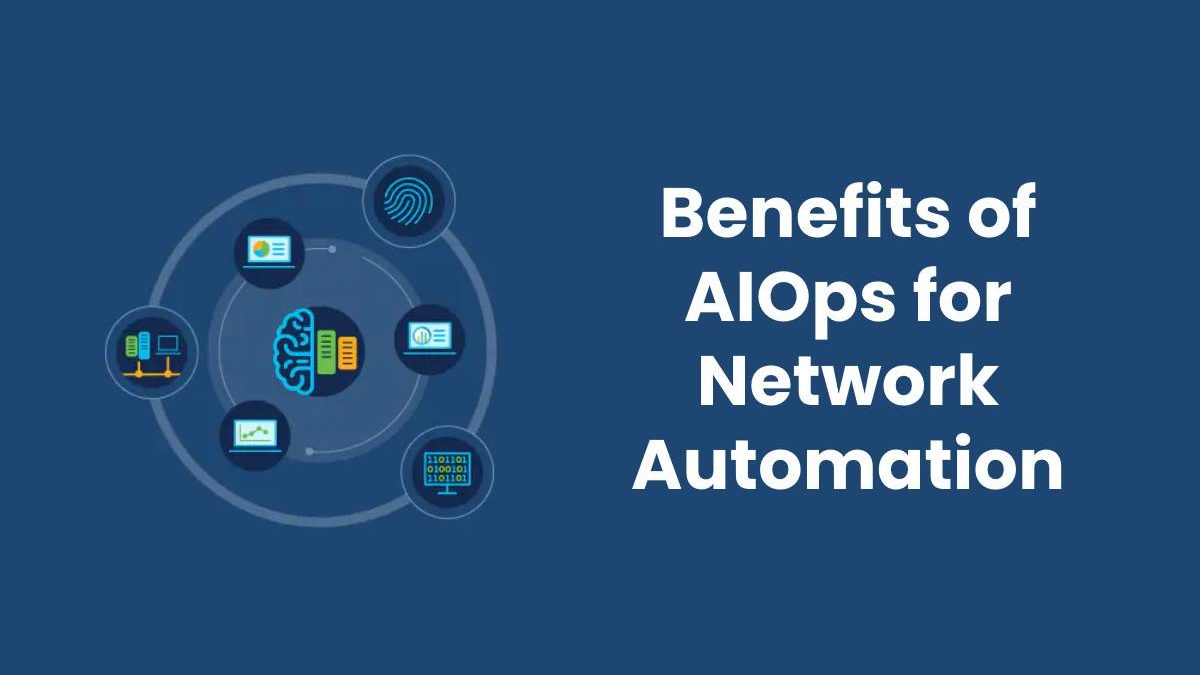Introduction
AIOps, according to Gartner, is the “application of machine learning (ML) and data science to IT
operations problems.” AIOps platforms use big data and machine learning to augment and
partially replace all primary IT operations functions, such as availability and performance
monitoring, event correlation and analysis, and IT service management and
automation.”Benefits of automated networks with AIOps platform provides a unified end-to-end
view of all business transactions that occur within a system. It collects thousands of
configuration and operational data points and then generates a dynamic inventory, topology, and
application map of the IT environment automatically. An automated network with AIOps platform
can perform the following tasks:
● Taking in data from various sources
● Using machine learning to enable data analytics
● Data ingestion analysis in real time
● Data storage history analysis
● Keeping and making data available
● Prescriptive responses to system problems
● Developing a strategy based on prescriptive analysis
These are all obviously time-consuming processes. AIOps would be overwhelmed by the
workload if automation was not a big part of the methodology, especially on high-load systems.
Fortunately, automation plays an important role in the system.
Data is catalogued, indexed, metadata tagged, graphed, stored, and documented after it is
ingested. The system generates a baseline of intelligence that can be used and enhanced in the
future. In essence, an AIOps platform creates a blueprint of how an efficient system works and
then attempts to ensure that everything in the IT estate follows this blueprint.
As data flows in, the AIOps platform detects anomalies using ML techniques such as pattern
matching. Real-time data correlation aids in the extraction of new insights from raw data sets.
Time-series models are also created, allowing operations to ‘go back in time’ to better
understand the root causes and patterns that lead up to service outages.
Other analytics are also used to examine, understand, and improve agent performance, such as
predictive and prescriptive analysis, historical data analysis, and causal analysis. This all
happens automatically, and the efficiency grows over time. All of this analysis can help the
AIOps platform detect problems before they happen, lowering the mean time to repair. AIOps
can initiate automatic system responses that address problems in real-time, even when users
are unaware of the problem.
Benefits of Automated Network with AIOps Platform
AIOps can identify issues, triage them, and prioritise them for IT. Network automation with
AIOps can implement diagnoses to assist the system in self-healing or provide actions that
operations can take to resolve issues, either directly or through procedures that have proven
effective in the past.
AIOps platforms can recognise naturally occurring seasons in data. They can recognise when a
particular behaviour is no longer abnormal. There will always be anomalies in a large-scale
deployment, and some will matter far more than others. An AIOps platform can be programmed
to send out alerts on the most serious issues, while noting or logging others for remediation at
the next check-up.
Chatbots can be used to democratise access to knowledge and automate recurring tasks as
virtual support assistants (VSAs). Chatbots can even generate responses that are tailored to
any issue that arises. A detailed description of the problem can be included, as well as any
potential solutions.
AIOPs can be used to identify the underlying causes of problems and to propose solutions.
AIOps can correlate abnormal events with other event data across the IT estate using
industry-specific models, then drill down into the cause of an outage or performance problem
and suggest solutions.
Wrapping Up
One of the great ironies of today’s IT landscape is that systems have become so complex that
they require an additional layer of monitoring tools to keep track of everything going on beneath
the hood. This is where AIOps really shines. It keeps track of everything that is operational and
ensures that there are no technical issues with IT functions.
AIOps are proactive in that they capture data as it is ingested, making it much more useful to
the operation. Another benefit of using an automated network with AIOps provides a
tried-and-true approach to improving service quality, reducing system downtime, and vastly
increasing operational efficiency. Allowing system problems to become customer-facing
problems is simply not acceptable in today’s competitive environment.
Although an AIOps platform provides a unified end-to-end view of all business transactions
flowing through a system, AIOps for network automation is most effective when combined with
the appropriate operations culture. A data-driven culture in which most decisions are based on data rather than experience is required. Automation is beneficial, but it is not the be-all and end-all.
Related posts
Sidebar
Recent Posts
An Inside Look Of Paraulogic
Introduction Welcome to the exciting world of Paraulogic! Are you ready to dive into a linguistic adventure and put your…
Empowering Artists with Cryptocurrency: A Guide to Selling Art Using NFTs
In the ever-evolving landscape of the art world, artists are constantly seeking innovative ways to showcase and monetize their creations….



